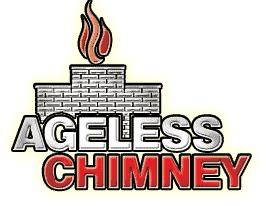Fireplace Cleaning in Battery Park City, NY
What our clients say




Read About Us
Browse Fireplace Services
contact us
Fireplace Maintenance Tips from a Leading Fireplace Cleaning Company in Battery Park City, NY

Why Fireplace Maintenance is Essential
Proper fireplace maintenance is crucial for ensuring the safety and efficiency of your fireplace. In Battery Park City, NY, homeowners trust Ageless Chimney for professional fireplace care.
Regular maintenance prevents potential hazards and prolongs the lifespan of your fireplace. At Ageless Chimney, we offer comprehensive services to keep your fireplace in top condition.
Certified Technicians
Our team consists of certified and experienced technicians dedicated to providing top-notch fireplace maintenance in New York City.
Customer Satisfaction
We prioritize customer satisfaction and strive to exceed expectations with every service. Homeowners in Battery Park City, NY, trust us for our reliability and expertise.
Emergency Services
Ageless Chimney offers emergency maintenance and repair services. Call 516-795-1313 for prompt assistance whenever you need it.

Top Fireplace Maintenance Tips
- Schedule Regular Inspections: Inspecting your fireplace annually is crucial for maintaining its safety and efficiency. Professional inspections by Ageless Chimney in Battery Park City, NY, can help detect and address potential issues early. This includes checking for creosote buildup, cracks in the chimney, and other hazards that could pose a risk to your home and family. Regular inspections ensure your fireplace operates correctly and safely throughout the year.
- Clean the Chimney: Keeping your chimney clean is essential for safe fireplace operation. A dirty chimney can lead to blockages and dangerous creosote buildup, which increases the risk of chimney fires. In Battery Park City, NY, Ageless Chimney provides thorough chimney cleaning services to ensure your chimney is free from obstructions and safe to use. Regular cleaning not only enhances safety but also improves the efficiency of your fireplace, making it more cost-effective to run.
- Check for Damage: It is vital to regularly inspect your fireplace and chimney for signs of damage. Look for cracks, loose bricks, or other structural issues that could compromise your fireplace’s safety. Ageless Chimney offers comprehensive inspection and repair services in New York City to address any damage promptly. By looking for potential problems and addressing them quickly, you can prevent more significant issues and ensure your fireplace remains in top condition.
- Install Carbon Monoxide Detectors: One of the most critical safety measures for any home with a fireplace is the installation of carbon monoxide detectors. These devices can alert you to dangerous levels of carbon monoxide, a colorless and odorless gas that can be lethal. Ensure your home in Battery Park City, NY, is equipped with functioning carbon monoxide detectors and test them regularly to ensure they are in working order. This small step can provide significant peace of mind and protect your family from harm.

Benefits of Professional Fireplace Maintenance
Engaging professionals for fireplace maintenance offers numerous benefits that enhance the safety and efficiency of your fireplace. Ageless Chimney in Battery Park City, NY, provides expert services that ensure your fireplace is in optimal condition. Regular professional maintenance reduces the risk of fire hazards and carbon monoxide poisoning by ensuring all components function correctly and any issues are addressed promptly.
One of the primary benefits of professional fireplace maintenance is improved efficiency. A well-maintained fireplace burns fuel more efficiently, providing more heat while using less fuel. This keeps your home warmer and saves you money on fuel costs. Ageless Chimney specializes in optimizing fireplace performance, helping you get the most out of your heating system in New York City. Our team’s expertise ensures that your fireplace operates at peak efficiency.
Additionally, professional maintenance extends the lifespan of your fireplace. Regular care and timely repairs prevent minor issues from becoming major problems, which can be costly and difficult to fix. In Battery Park City, NY, Ageless Chimney offers comprehensive maintenance plans, including inspections, cleaning, and repairs. These services help preserve the integrity of your fireplace, ensuring it remains a reliable source of warmth and comfort for many years to come.
Choosing Ageless Chimney for your fireplace maintenance needs means you are investing in its long-term health and safety. Our professional services in New York City provide peace of mind, knowing that your fireplace is well-maintained and safe to use. With our experienced technicians and commitment to customer satisfaction, you can trust us to keep your fireplace in excellent condition year-round.
Have a question?
Battery Park City is a mainly residential 92-acre (37 ha) planned community and neighborhood on the west side of the southern tip of the island of Manhattan in New York City. It is bounded by the Hudson River on the west, the Hudson River shoreline on the north and south, and the West Side Highway on the east. The neighborhood is named for the Battery, formerly known as Battery Park, located directly to the south.
Local Resources
Useful links for Battery Park City, NY
- Open a Battery Park City, NY map
- Find the Battery Park City, NY United States Post Office
- Locate nearby Battery Park City, NY pharmacies
- View the current Battery Park City, NY weather report
- Browse a list of Battery Park City, NY public and private schools
- Battery Park City, NY is located in New York county in New York State
